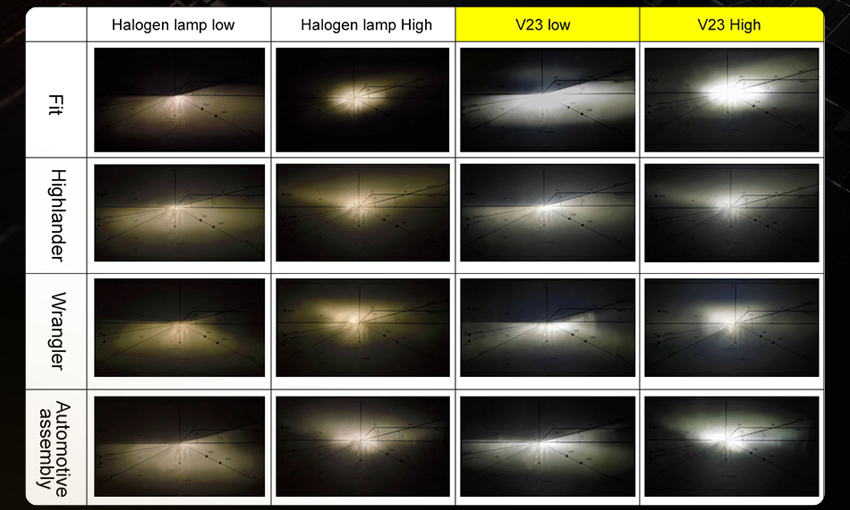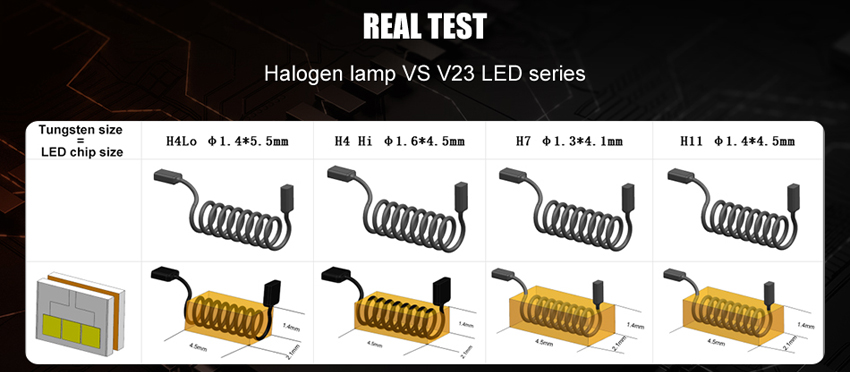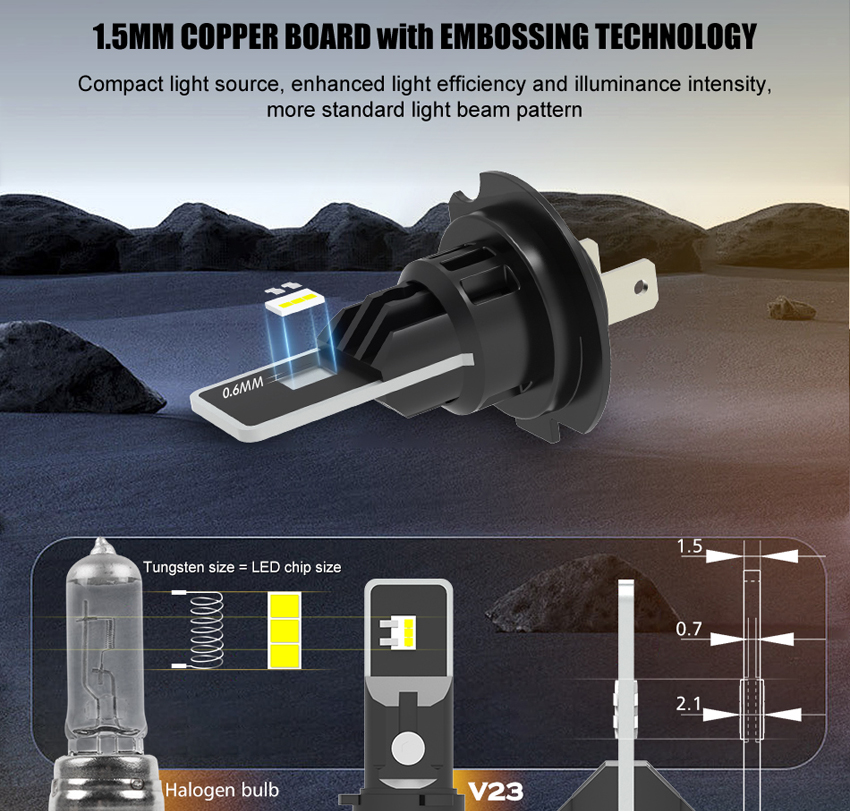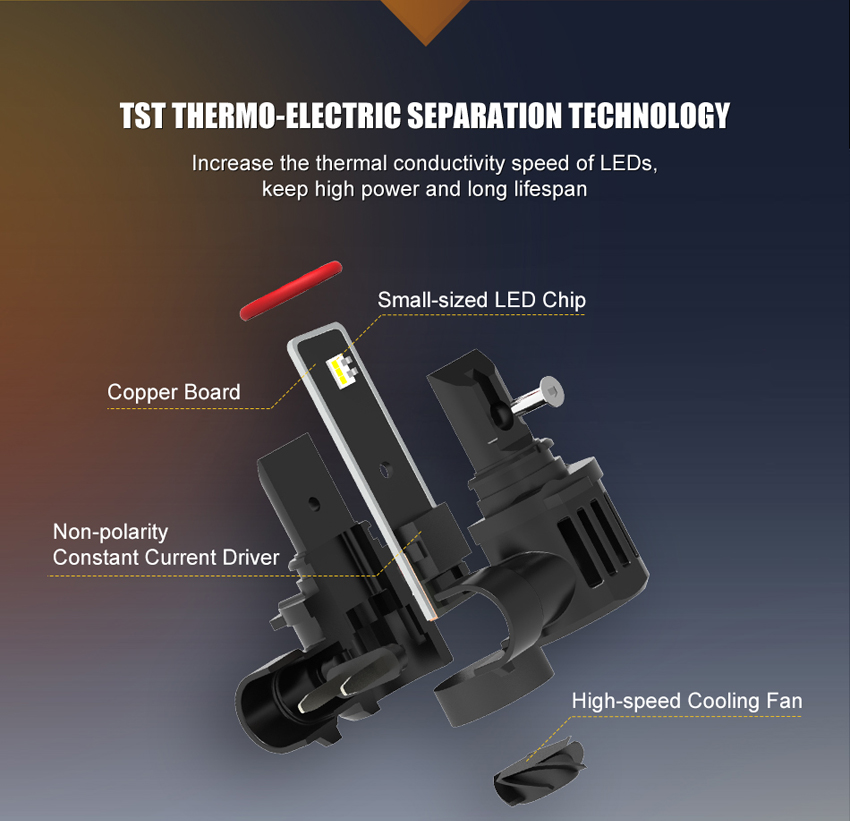In recent years, there has been a significant increase in demand within the European market for street-legal LED headlight bulbs. Companies involved in the automotive LED lighting business are particularly keen on finding compliant LED headlight bulbs. Philips and Osram have been at the forefront, introducing LED bulb series that meet European regulations:
· Philips Ultinon Pro6000 LED
· OSRAM NIGHT BREAKER LED
These products are among the first LED headlight bulbs on the market that truly comply with European regulations. They aim to provide consumers with superior lighting performance compared to traditional halogen bulbs while ensuring a safer driving experience.
Since 2010, many new cars sold in Europe have been equipped with LED headlights instead of halogen ones. The installation, power, and brightness of LED bulbs are regulated by law. The main regulatory standards include:
· ECE R112: Specifies general requirements for headlight performance and installation positions.
· ECE R128: Provides specific requirements for LED headlights, ensuring they meet standards for brightness, color temperature, and beam shape without causing glare to other road users.
· ECE R48: Sets out general performance requirements for vehicle lighting equipment, including headlights, high beams, and low beams.
The Complexity of Selling LED Bulbs in Europe
Does this mean we can sell LED bulbs in Europe as long as they meet ECE certification? The answer is: it’s not that simple. LED bulbs are just light sources. Without the LED headlight assembly, they cannot produce the required beam pattern for forward illumination, thus they cannot meet the regulations mentioned above.
Creating Road-Legal LED Bulbs
How should we create a road-legal LED bulb? Let’s take a cue from Philips and Osram. On their official websites, we can easily find statements like this regarding their bulbs: The LED bulbs can be used on roads in countries that have given approval, but only on certain vehicle models and with specific types of lighting.
So, the "approved" bulbs are certified only for certain countries and specific lists of compatible vehicles. Certification involves photometric testing by third-party labs. Philips and Osram collaborate with TÜV-Süd, which assesses each headlamp according to their procedures. The main test verifies if the beam patterns meet UNECE R112 standards. If the photometric requirements are satisfied, the headlamp is likely to be included in the "approved" list. Some headlamps will pass, while others may not, largely depending on the optics.
The vehicle compatibility lists provided by Philips and Osram cover over 450 vehicle models. This implies conducting tests on headlights for hundreds of vehicle models, resulting in significant and costly testing expenses. This is a cost that only large companies can afford. If your company has the capability, you can also proceed in this manner.
Options for Smaller Companies
If you are one of the smaller companies with less financial strength, what can you do in this case? Following the same path as Philips and Osram is not realistic. However, looking for an LED headlight bulb with a standard beam pattern that closely resembles a halogen bulb is a viable option! As a supplier with over 15 years of experience in the LED car light field, developing professional and high-performance products is always our goal. Therefore, we introduced the V23 LED Headlight Bulb!
Professional Design and Outstanding Performance: V23 LED Headlight Bulb

Below is a beam pattern comparison between a halogen headlight bulb and the V23 LED headlight bulb. The beam pattern of the V23 is standard like that of a halogen bulb but is 300% brighter, ensuring driving safety on city roads.

How Do We Achieve That?
1.Precision Design: The LED chip size is the same as the tungsten filament in the halogen bulb, ensuring the light source position is as identical as possible.

2.Advanced Materials: We use a 1.5mm copper board with embossing technology. This is only 1/4-1/5 the thickness of most other LED bulbs on the market, which helps reduce lighting shadows significantly.

3.Thermoelectric Separation Technology: V23 adopts TST (Thermoelectric Separation Technology) to maintain high power and long lifespan.

Conclusion
By learning from the success of major brands and incorporating our own innovative designs, we can meet market demands and provide high-quality LED headlight products that enhance the driving safety. The V23 LED Headlight Bulb is a perfect example of such a product, offering excellent performance and significantly improved safety, thereby providing consumers with a safer and more enjoyable driving experience.
For those looking for a reliable, high-performance LED headlight bulb that meets stringent quality standards, the V23 is an ideal choice. Its 10-40V DC compatibility makes it suitable for both 12V cars and 24V trucks. If you're interested in capturing more market share and increasing your profits, consider starting with a sample order of V23 LED bulbs.
Contact us for more information and to place your order today!
We never ever stop development.